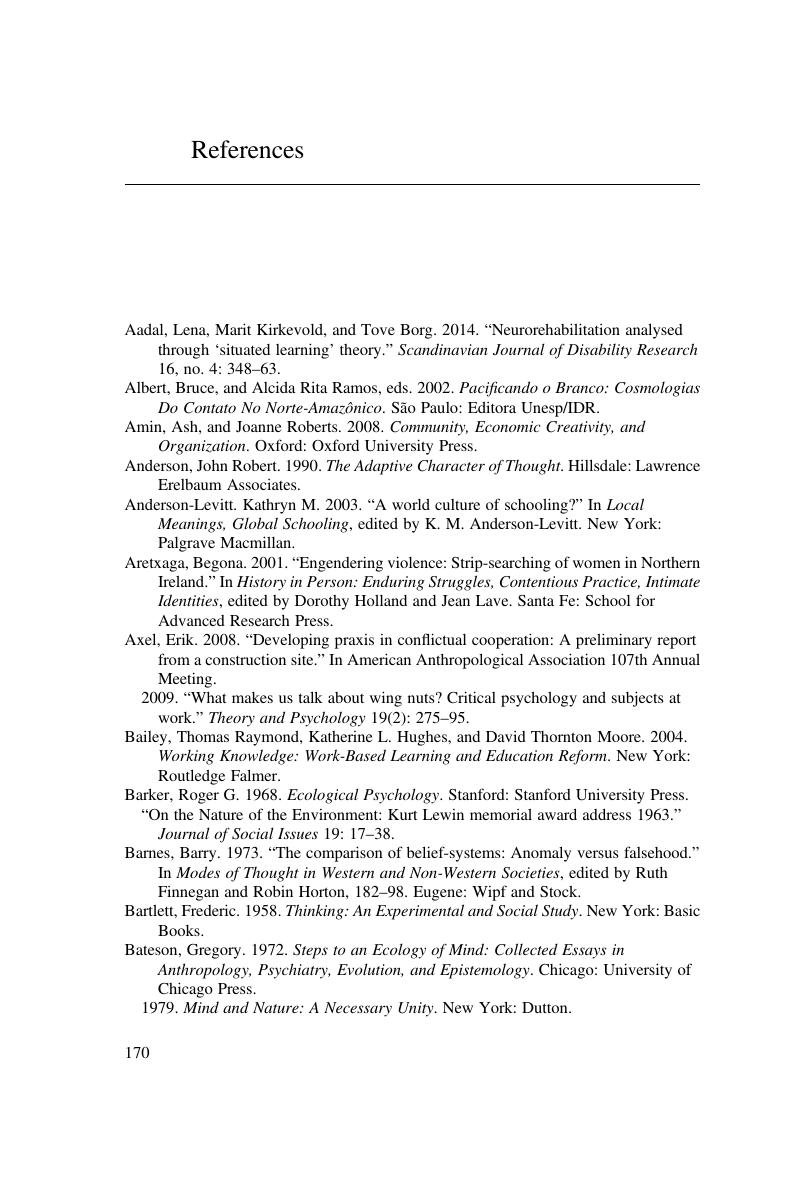Book contents
- Learning and Everyday Life
- Learning and Everyday Life
- Copyright page
- Contents
- Acknowledgments
- Introduction
- 1 The Savagery of the Domestic Mind
- 2 The Problem of Context and Practices of Decontextualization
- 3 Ethnographies of Apprenticeship
- 4 Teaching as Learning, in Practice
- 5 Production Schools
- 6 Everyday Life
- 7 Situated Learning
- Afterword
- References
- Index
- References
References
Published online by Cambridge University Press: 11 March 2019
- Learning and Everyday Life
- Learning and Everyday Life
- Copyright page
- Contents
- Acknowledgments
- Introduction
- 1 The Savagery of the Domestic Mind
- 2 The Problem of Context and Practices of Decontextualization
- 3 Ethnographies of Apprenticeship
- 4 Teaching as Learning, in Practice
- 5 Production Schools
- 6 Everyday Life
- 7 Situated Learning
- Afterword
- References
- Index
- References
Summary

- Type
- Chapter
- Information
- Learning and Everyday LifeAccess, Participation, and Changing Practice, pp. 170 - 184Publisher: Cambridge University PressPrint publication year: 2019



